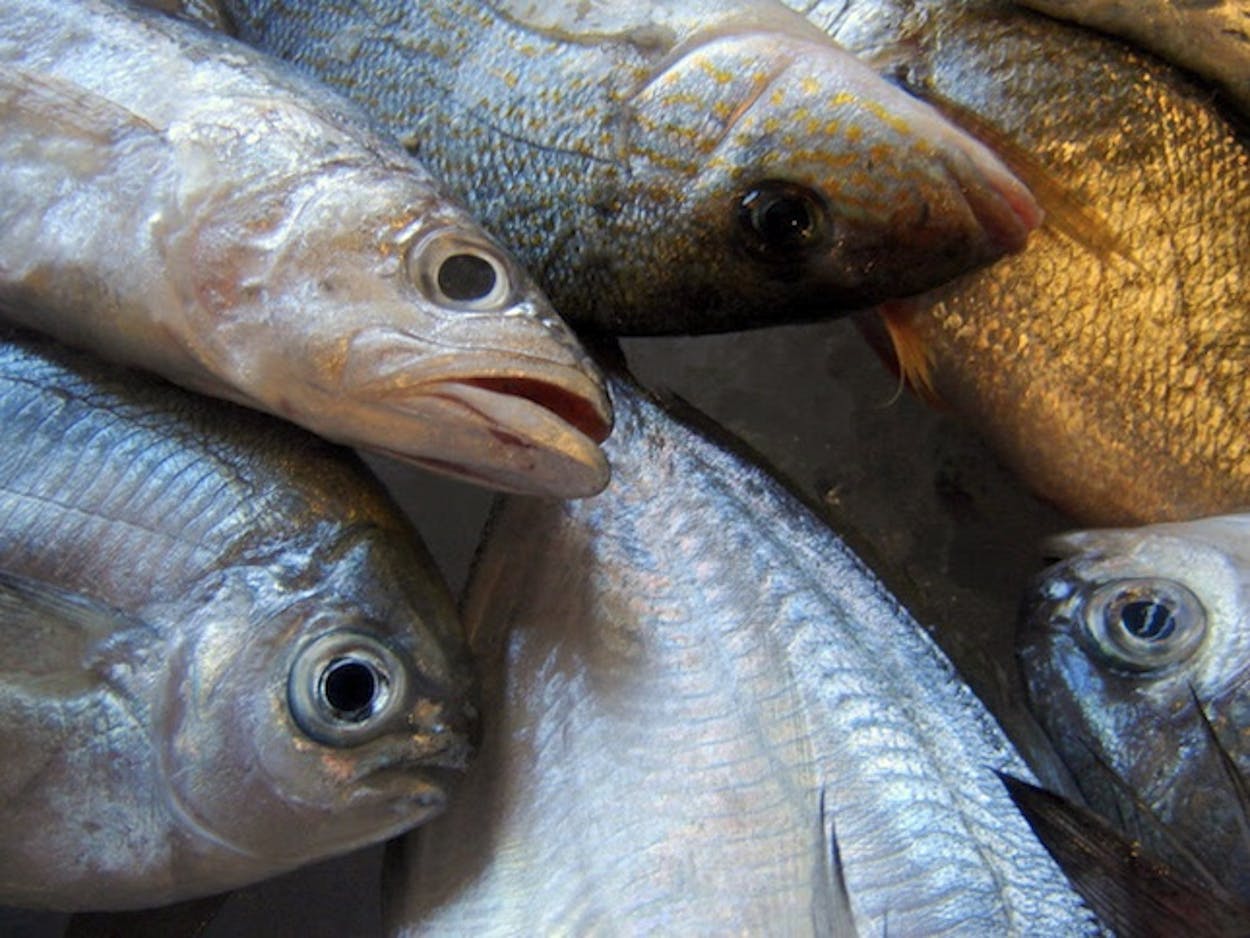The nets swing gently over the deck of the shrimp boat. They hover momentarily, raining seawater and all manner of flotsam and jetsam that’s been swept up as they trawl the bottom of the Gulf of Mexico. The bag lines are cut, and what seems like the full bounty of the ocean spills out—thousands of shrimp, of course, but also finfish, weird-looking crustaceans, and bulbous jellyfish lying motionless on the deck. Everything that is not shrimp is known as bycatch and will be shoveled back into the sea, dead or alive. In a typical shrimp net, the bycatch can weigh up to fifteen times more than the shrimp.
That so much of the haul is routinely discarded always bothered P. J. Stoops, a chef and fishmonger who has quietly revolutionized how Houstonians eat seafood over the past eight years. Stoops drifted into cooking as a way to support himself when he was a student at the University of Texas in the nineties. He eventually spent time training in a restaurant in France. In 2001 he moved to Thailand to become executive chef at a riverside resort in the northern part of the country. There, he learned that the nose-to-tail movement usually associated with cows and pigs can also be applied to fish—not only the idea that every part of the fish can be used but, more important, that every fish can be.
In 2006 Stoops returned to Texas and drifted into fishmongering along the upper Gulf Coast. He’d drive his white minivan down to the docks in Galveston, buy fish directly off the boats, then sell it to chefs in Austin and Houston, usually at a meager profit. But as it turns out, Stoops was in the right place at the right time. New and ambitious restaurants like Reef and Feast, in Houston, were looking to expand their menus with distinctive seafood. Stoops started to peddle a few of the more exotic bycatch species, and he turned out to be an extremely persuasive promoter. With an encyclopedic knowledge of species and fisheries, he was able to provide not only the actual fish but also the know-how about which species were delicious and easy to prepare.
Eventually, the chefs began to take the bait. What used to be thought of as “trash fish” slowly became the respectable and sustainable “bycatch.” Still, the vision of the average seafood lover regularly consuming these species remains elusive. “Exotic dishes are one thing,” says Stoops, “but the real goal is to make bycatch a part of the everyday menu.” To that end, Stoops created the Total Catch Market in collaboration with local seafood distributor Louisiana Foods. Although the weekly retail market has ended, Louisiana Foods still markets bycatch as a wholesale program. And shoppers can still purchase bycatch at Revival Market on the weekends. Meanwhile, Stoops has become one of the most influential people in the Houston restaurant community. Last September, he announced a partnership with local restaurant group Treadsack to open a northern Thai restaurant called Foreign Correspondents, where he will be the executive chef. He’ll continue fishmongering for the time being, but the new restaurant will allow him to put into practice everything he has been preaching over the past few years: use every fish, and every part of the fish, in every part of the menu.






